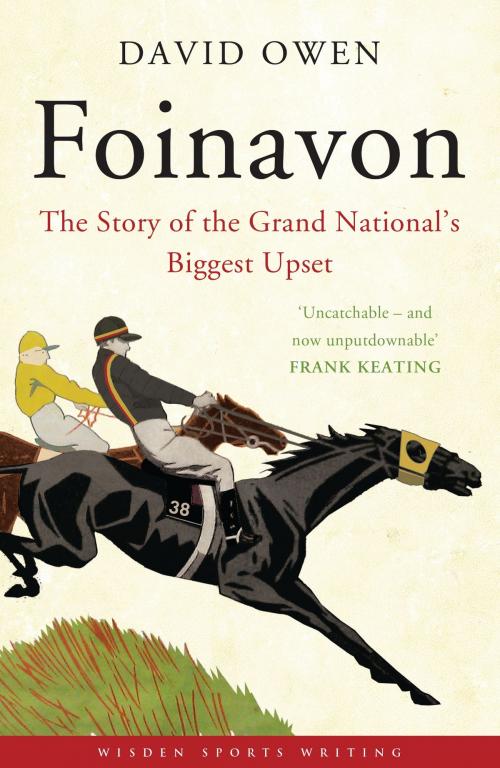Foinavon
The Story of the Grand National’s Biggest Upset
Nonfiction, Sports, Horse Sports, Horse Racing| Author: | David Owen | ISBN: | 9781408192214 |
| Publisher: | Bloomsbury Publishing | Publication: | April 11, 2013 |
| Imprint: | Wisden | Language: | English |
| Author: | David Owen |
| ISBN: | 9781408192214 |
| Publisher: | Bloomsbury Publishing |
| Publication: | April 11, 2013 |
| Imprint: | Wisden |
| Language: | English |
It was the upset to end all upsets. On 8 April 1967 at Aintree racecourse in Liverpool, a 100-1 outsider in peculiar blinkers sidestepped chaos extraordinary even by the Grand National's standards and won the world's toughest steeplechase.
The jumps-racing establishment - and Gregory Peck, the Hollywood actor whose much-fancied horse was reduced to the status of an also-ran - took a dim view. But Foinavon, the dogged victor, and Susie, the white nanny goat who accompanied him everywhere, became instant celebrities. Within days, the traffic was being stopped for them in front of Buckingham Palace en route to an audience with the Duchess of Kent. Fan mail arrived addressed to 'Foinavon, England'. According to John Kempton, Foinavon's trainer, the 1967 race 'reminded everyone that the National was part of our heritage'.
Foinavon's Grand National victory has become as much a part of British sporting folklore as the England football team's one and only World Cup win the previous year. The race has even spawned its own mythology, with the winner portrayed as a horse so useless that not even its owner or trainer could be bothered to come to Liverpool to see him run. Yet remarkably the real story of how Foinavon emerged from an obscure yard near the ancient Ridgeway to pull off one of the most talked-about victories in horseracing history has never been told.
Based on original interviews with scores of people who were at Aintree on that rainswept day, or whose lives were in some way touched by the shock result, this book will use the story of this extraordinary race to explore why the Grand National holds tens of millions of people spellbound, year after year, for ten minutes on a Saturday afternoon in early spring.
It was the upset to end all upsets. On 8 April 1967 at Aintree racecourse in Liverpool, a 100-1 outsider in peculiar blinkers sidestepped chaos extraordinary even by the Grand National's standards and won the world's toughest steeplechase.
The jumps-racing establishment - and Gregory Peck, the Hollywood actor whose much-fancied horse was reduced to the status of an also-ran - took a dim view. But Foinavon, the dogged victor, and Susie, the white nanny goat who accompanied him everywhere, became instant celebrities. Within days, the traffic was being stopped for them in front of Buckingham Palace en route to an audience with the Duchess of Kent. Fan mail arrived addressed to 'Foinavon, England'. According to John Kempton, Foinavon's trainer, the 1967 race 'reminded everyone that the National was part of our heritage'.
Foinavon's Grand National victory has become as much a part of British sporting folklore as the England football team's one and only World Cup win the previous year. The race has even spawned its own mythology, with the winner portrayed as a horse so useless that not even its owner or trainer could be bothered to come to Liverpool to see him run. Yet remarkably the real story of how Foinavon emerged from an obscure yard near the ancient Ridgeway to pull off one of the most talked-about victories in horseracing history has never been told.
Based on original interviews with scores of people who were at Aintree on that rainswept day, or whose lives were in some way touched by the shock result, this book will use the story of this extraordinary race to explore why the Grand National holds tens of millions of people spellbound, year after year, for ten minutes on a Saturday afternoon in early spring.















